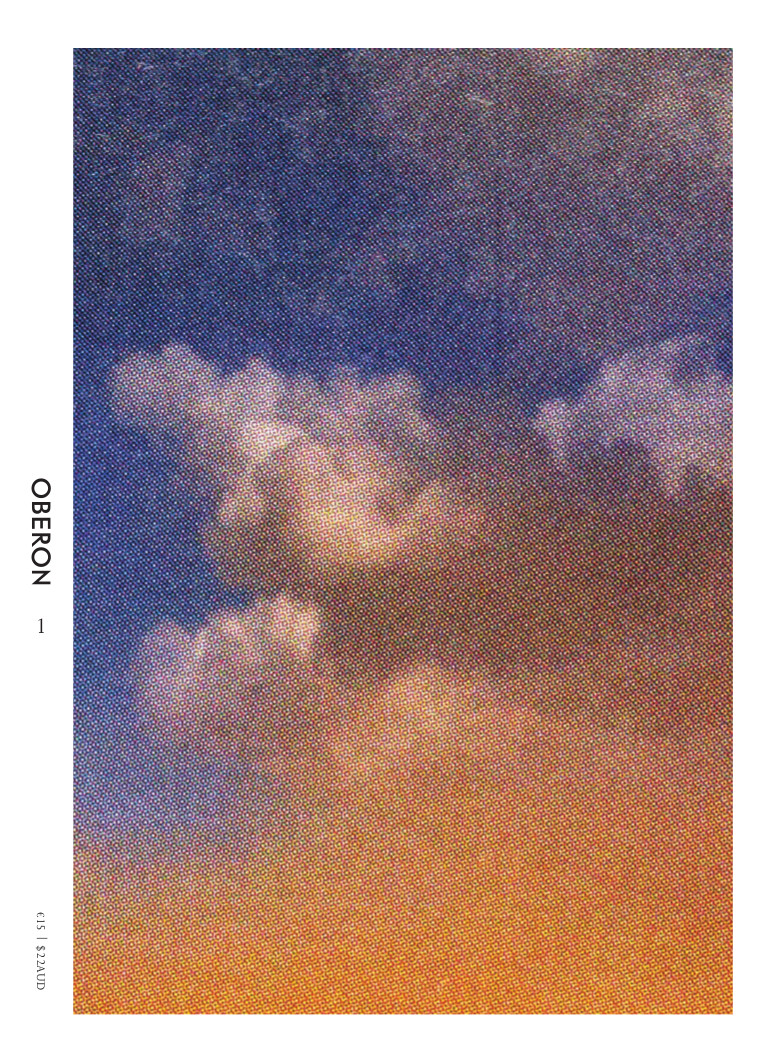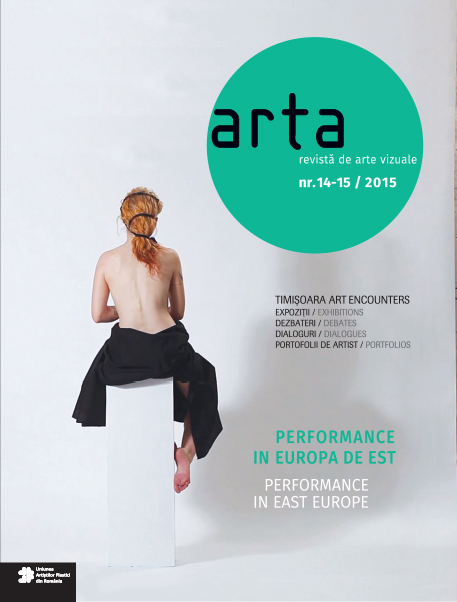After Us: Art—Science—Politics, 2 (2016)
Filed under magazine | Tags: · anthropocene, architecture, art, human

“Through essays, pictorials and fiction, After Us hopes to look beyond the horizon, exploring developments in science and technology, new forms and expressions in art, and alternative political thinking. In print and online.”
Contents: Essays by Claire Colebrook on man and the apocalypse, Jennifer Boyd on explosions and their motifs, Peter Wessel Zapffe on the tragedy of intellect. Interview with Patrik Schumacher by Martti Kalliala. Fiction by Amy Ireland. Art by Daniela Yohannes, Laurel Halo, Mari Matsutoya & LaTurbo Avedon. Graphic fiction by Lando. Illustrations by Dave Gaskarth, Rich Foster, Patrick Savile and featuring the work of Alice Channer, Quayola, Zaha Hadid.
Publisher Optigram, London, Sep 2016
40 pages
HTML (use menu to browse contents)
PDF (10 MB, added on 2017-3-4)
See also Issue 1.
Comment (0)Oberon (2015–)
Filed under magazine | Tags: · art

“Oberon is a periodical on art in the world. Oberon preferences a slower, less frenzied conversation around art and culture, giving writers and artists the chance to develop ideas, and readers the space to think. Each edition sees guest-edited sections of texts bridged by poetic sequences of images, supported by a comprehensive annotated index of images.”
Edited by Nick Garner
Publisher Das Platforms, Australia & Denmark, since 2015
ISSN 2205-5304
Issue 1: HTML (partial), PDF, PDF (Sep 2015)
Issue 2: HTML (partial), PDF, PDF (Apr 2016)
Revista Arta (14-15): Performance in Eastern Europe (2015) [Romanian/English]
Filed under magazine | Tags: · art history, central europe, east-central europe, eastern europe, happening, performance, performance art, southeastern europe

Special dossier of the magazine.
“Under such names as happening, processual or performative art, situationist or contextual art, actionism or corporal / body art, performance art has remained since the 1960s maybe the most direct, incisive, and cutting-edge form of artistic expression of the last decades. Positioned at the cross-point between the visual, the discursive, and the theatrical, involving the artist with his/her entire physical, psychological, and spiritual being, in front of the public or together with it, performance art has not yet run out of resources in the context of the last years, when other forms of visual intervention have become more fashionable. Since the 1960s, performance art has represented a form of protest of the artists against the aesthetic establishment, accelerated muzeification, and the consumerism of the art market. The dossier coordinated by Ileana Pintilie demonstrates all these assertions, but also underlines the emancipating dimension performance art has had in the former communist countries of Eastern Europe – the fascination and fear which totalitarian regimes developed in front of this provocative form of social and artistic non-conformism.”
Edited by Ileana Pintilie
Publisher Romanian Artists’ Union (Uniunea Artiștilor Plastici din România), Bucharest, 2015
98 pages
PDF (3 MB)
Comment (0)
